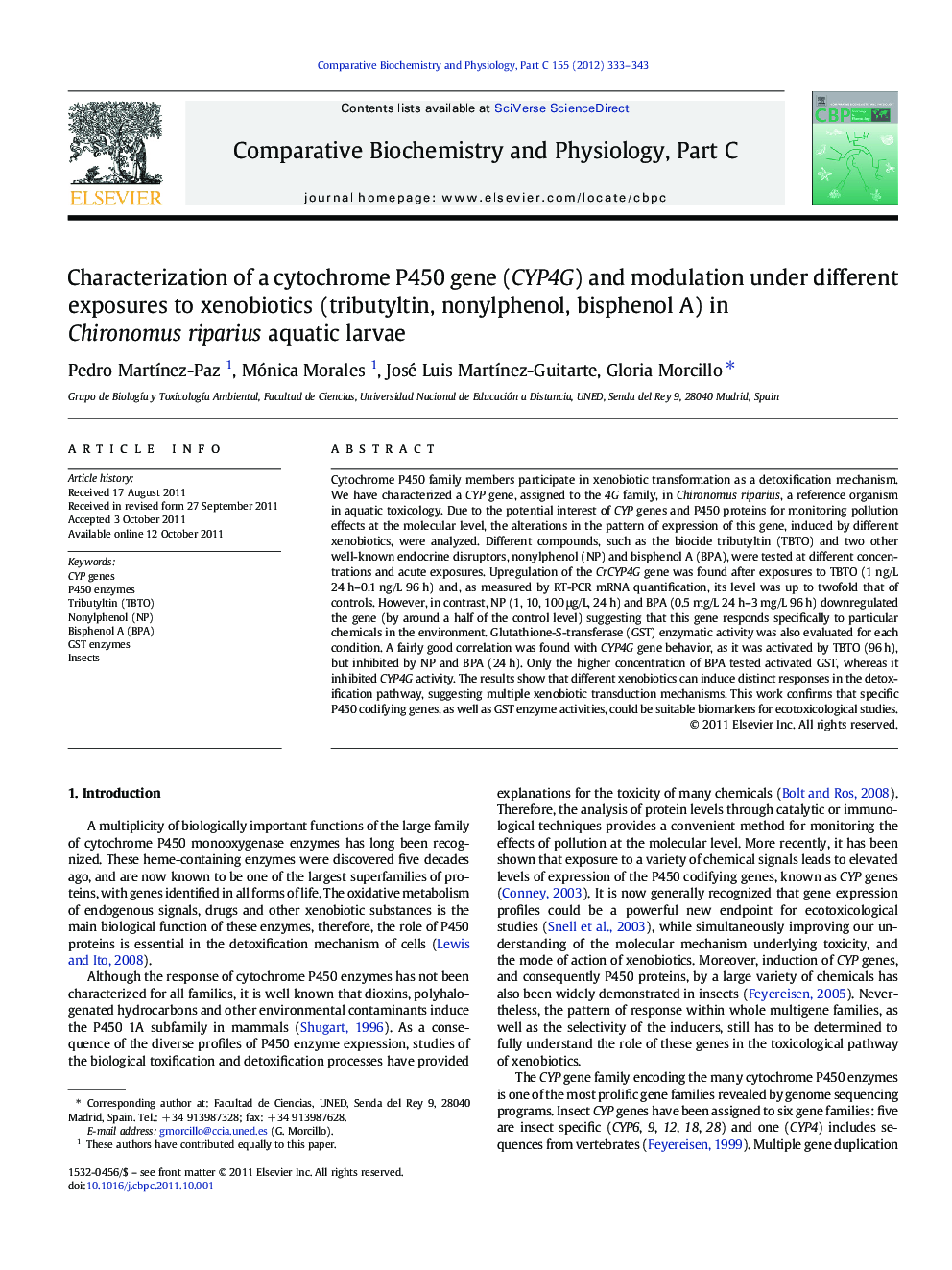| کد مقاله | کد نشریه | سال انتشار | مقاله انگلیسی | نسخه تمام متن |
|---|---|---|---|---|
| 10821674 | 1061492 | 2012 | 11 صفحه PDF | دانلود رایگان |
عنوان انگلیسی مقاله ISI
Characterization of a cytochrome P450 gene (CYP4G) and modulation under different exposures to xenobiotics (tributyltin, nonylphenol, bisphenol A) in Chironomus riparius aquatic larvae
دانلود مقاله + سفارش ترجمه
دانلود مقاله ISI انگلیسی
رایگان برای ایرانیان
موضوعات مرتبط
علوم زیستی و بیوفناوری
بیوشیمی، ژنتیک و زیست شناسی مولکولی
زیست شیمی
پیش نمایش صفحه اول مقاله

چکیده انگلیسی
Cytochrome P450 family members participate in xenobiotic transformation as a detoxification mechanism. We have characterized a CYP gene, assigned to the 4G family, in Chironomus riparius, a reference organism in aquatic toxicology. Due to the potential interest of CYP genes and P450 proteins for monitoring pollution effects at the molecular level, the alterations in the pattern of expression of this gene, induced by different xenobiotics, were analyzed. Different compounds, such as the biocide tributyltin (TBTO) and two other well-known endocrine disruptors, nonylphenol (NP) and bisphenol A (BPA), were tested at different concentrations and acute exposures. Upregulation of the CrCYP4G gene was found after exposures to TBTO (1 ng/L 24 h-0.1 ng/L 96 h) and, as measured by RT-PCR mRNA quantification, its level was up to twofold that of controls. However, in contrast, NP (1, 10, 100 μg/L, 24 h) and BPA (0.5 mg/L 24 h-3 mg/L 96 h) downregulated the gene (by around a half of the control level) suggesting that this gene responds specifically to particular chemicals in the environment. Glutathione-S-transferase (GST) enzymatic activity was also evaluated for each condition. A fairly good correlation was found with CYP4G gene behavior, as it was activated by TBTO (96 h), but inhibited by NP and BPA (24 h). Only the higher concentration of BPA tested activated GST, whereas it inhibited CYP4G activity. The results show that different xenobiotics can induce distinct responses in the detoxification pathway, suggesting multiple xenobiotic transduction mechanisms. This work confirms that specific P450 codifying genes, as well as GST enzyme activities, could be suitable biomarkers for ecotoxicological studies.
ناشر
Database: Elsevier - ScienceDirect (ساینس دایرکت)
Journal: Comparative Biochemistry and Physiology Part C: Toxicology & Pharmacology - Volume 155, Issue 2, March 2012, Pages 333-343
Journal: Comparative Biochemistry and Physiology Part C: Toxicology & Pharmacology - Volume 155, Issue 2, March 2012, Pages 333-343
نویسندگان
Pedro MartÃnez-Paz, Mónica Morales, José Luis MartÃnez-Guitarte, Gloria Morcillo,